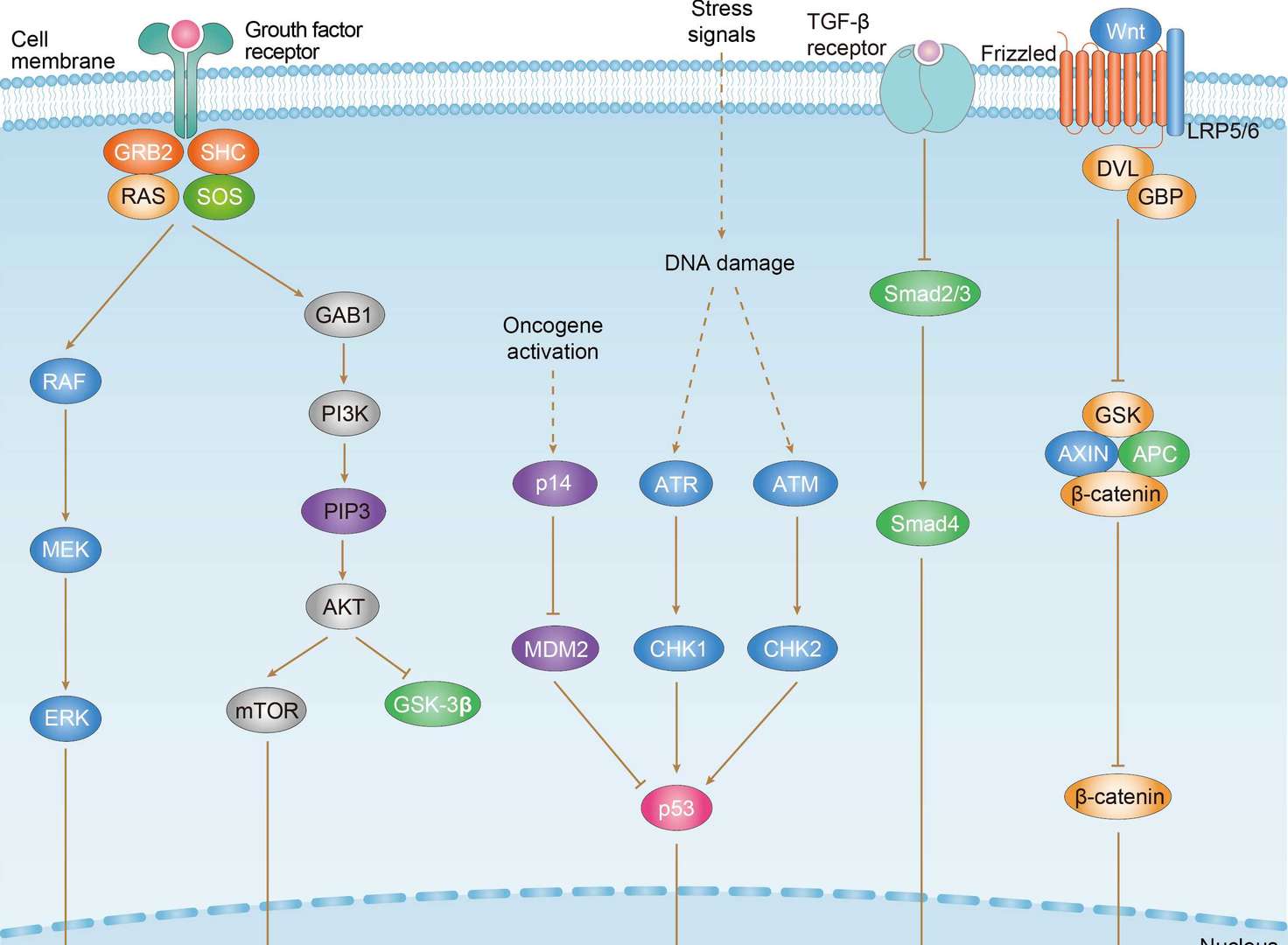AbPlus™ Anti-ATM Magnetic Beads (4E11)
CAT#: VS-0424-XY24
The AbPlus Anti-ATM Magnetic Beads (4E11) is an innovative affinity resin which is bound with anti-ATM specific antibody (4E11). The beads were designed for small-scale affinity purification and immunoprecipitation (IP) of ATM protein under native and denaturing conditions.









Specifications
- Applications
- Immunoprecipitation, Protein Purification
- Matrix
- Magrose bead (> 50 μmol/mL gel)
- Bead Ligand
- Anti-ATM specific antibody (4E11)
- Target
- ATM
- Immunogen
- Synthesized peptide derived from human ATM
- Target Species
- Human
- Antibody Clone
- 4E11
- Bead Capacity
- 20-30 mg/mL binding antibody
- Bead size
- 10-37 μm
- Stability
- pH 2-14
- Format
- 20% Suspension
- Buffer
- PBS, pH 7.4, with 1% BSA
- Preservative
- 0.03% Proclin 300
- Storage
- Stored at 4°C, and is stable for up to 2 years. Do not centrifuge, dry or freeze the magnetic beads.
Applications
- Application Notes
- The beads are in suspension and will settle upon storage. Prior to use, mix the vial gently (do not vortex) to ensure delivery of proper bead volume.
Target
- Introduction
- The protein encoded by this gene belongs to the PI3/PI4-kinase family. This protein is an important cell cycle checkpoint kinase that phosphorylates; thus, it functions as a regulator of a wide variety of downstream proteins, including tumor suppressor proteins p53 and BRCA1, checkpoint kinase CHK2, checkpoint proteins RAD17 and RAD9, and DNA repair protein NBS1. This protein and the closely related kinase ATR are thought to be master controllers of cell cycle checkpoint signaling pathways that are required for cell response to DNA damage and for genome stability. Mutations in this gene are associated with ataxia telangiectasia, an autosomal recessive disorder.
- Alternative Names
- AT1; ATA; ATC; ATD; ATE; ATDC; TEL1; TELO1; serine-protein kinase ATM; A-T mutated; AT mutated; TEL1, telomere maintenance 1, homolog; ataxia telangiectasia mutated
- Gene ID
- 472
- UniProt ID
- Q13315
Customer Review
There are currently no Customer reviews or questions for VS-0424-XY24. Click the button above to contact us or submit your feedback about this product.
Submit Your Publication
Published with our product? Submit your paper and receive a 10% discount on your next order! Share your research to earn exclusive rewards.
Related Diseases
Downloadable Resources
Download resources about recombinant antibody development and antibody engineering to boost your research.
Datasheet
MSDS
COA
Certificate of Analysis LookupTo download a Certificate of Analysis, please enter a lot number in the search box below. Note: Certificate of Analysis not available for kit components.
See other products for "ATM"
Select a product category from the dropdown menu below to view related products.
| CAT | Product Name | Application | Type |
|---|---|---|---|
| MOB-0634MZ | Mouse Anti-ATM Recombinant Antibody (clone NBU4-5H20/9) | ELISA, WB | Mouse IgG1 |
| CAT | Product Name | Application | Type |
|---|---|---|---|
| BRD-0059MZ | Chicken Anti-ATM Polyclonal IgY | WB | Chicken antibody |
| CAT | Product Name | Application | Type |
|---|---|---|---|
| MOR-0286 | Hi-Affi™ Rabbit Anti-ATM Recombinant Antibody (clone DS286AB) | IF, IHC-P, IP, WB | Rabbit IgG |
| CAT | Product Name | Application | Type |
|---|---|---|---|
| MRO-0139-CN | Rabbit Anti-ATM Recombinant Antibody (clone CBACN-053) | WB, IF, IHC | Rabbit IgG |
| CAT | Product Name | Application | Type |
|---|---|---|---|
| MRO-2302-CN | Rabbit Anti-ATM Recombinant Antibody (clone JM93-25) | WB, IF, IHC, IP | Rabbit IgG |
| CAT | Product Name | Application | Type |
|---|---|---|---|
| ZG-0317F | Mouse Anti-ATM Recombinant Antibody (ZG-0317F) | WB, ELISA | Mouse IgG |
| CAT | Product Name | Application | Type |
|---|---|---|---|
| ZG-0041J | Mouse Anti-ATM Recombinant Antibody (clone 1D1) | IHC-P, IF | Mouse IgG |
| CAT | Product Name | Application | Type |
|---|---|---|---|
| VS-1024-XY36 | Mouse Anti-NHP ATM Recombinant Antibody (clone 2C1) | WB, IHC, IP | Mouse IgG1 |
| CAT | Product Name | Application | Type |
|---|---|---|---|
| VS-0325-XY197 | Anti-ATM Immunohistochemistry Kit | IHC |
| CAT | Product Name | Application | Type |
|---|---|---|---|
| VS-0525-XY599 | Anti-Mouse ATM Immunohistochemistry Kit | IHC |
| CAT | Product Name | Application | Type |
|---|---|---|---|
| VS-0525-XY598 | Anti-Human ATM Immunohistochemistry Kit | IHC |
Popular Products

Application: ELISA, Neut, IF, IP, FC, FuncS

Application: WB, FC, IP, ELISA, Neut, FuncS, IF

Application: FuncS, Inhib, IP, ELISA
![Figure 2 Anti-Human CD19 Recombinant Antibody Fab Fragment [TAB-1611CL-F(E)] in HPLC](https://img.creativebiolabs.net/productimages/COA-TAB-1611CL-F(E)-2.png)
Application: Depletion, FuncS

Application: ELISA, FuncS, IHC, IF, FC, ADCC

Application: ELISA, WB, Neut, Funcs, IHC, Inhib

Application: Neut, FC, IHC-Fr, IP, BA

Application: ELISA, FC, Inhib, FuncS

Application: ELISA, WB, IF, FC, IP
For research use only. Not intended for any clinical use. No products from Creative Biolabs may be resold, modified for resale or used to manufacture commercial products without prior written approval from Creative Biolabs.
This site is protected by reCAPTCHA and the Google Privacy Policy and Terms of Service apply.












 Gastric Cancer
Gastric Cancer














